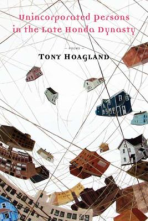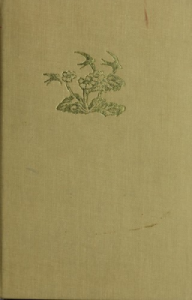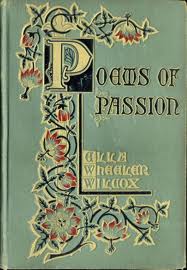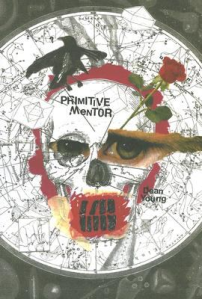For the last four months, I very slowly was reading through one book of poetry. Admittedly, this is a long book, comprised of six smaller “books” (or chapters, if you will), and I wanted to take my time and not rush through it.
De Rerum Natura, or On the Nature of Things was written by a poet-scientist-philosopher by the name of Lucretius, sometime in the 1st century BC. Very little is known about Lucretius: when exactly he was born, when he died, when he wrote the poem, who exactly he wrote it for, etc. etc. What we do know from his writing is that he was a disciple of the philosopher Epicurus. You may know him by the word that was derived from his name/philosophy – epicurean, meaning “fond of or adapted to luxury or indulgence in sensual pleasures; having luxurious tastes or habits, especially in eating and drinking.” (Also the inspiration for recipe-aggregator Epicurious)
Only a bit of what Epicurus wrote remains in the world, which makes De Rerum Natura extra important. Even more important is that it’s beautiful to read, and still moving as a piece of writing. While Lucretius explains the way the world is made of atoms, how that relates to the soul, and now-wacky theories about how the sun rising comes from a collection of “fire seeds” and how earthquakes are caused by collapsing caves on the inside of the Earth, he’s also paying close attention to metaphor and language, and making it something that one would want to read.

In fact, the original discovery of the manuscript of De Rerum Natura was made by chance, and a re-discovery in much the same way led to its reader, Stephen Greenblatt, writing a book on how he was affected and why the ideas in the poem are still important. That book is called The Swerve: How the World Became Modern, and this is some of what Greenblatt has to say about Lucretius
“Lucretius, who was born about a century before Christ, was emphatically not our contemporary. He thought that worms were spontaneously generated from wet soil, that earthquakes were the result of winds caught in underground caverns, that the sun circled the earth. But, at its heart, “On the Nature of Things” persuasively laid out what seemed to be a strikingly modern understanding of the world.” – from an interview in The New Yorker.
“It’s a theory of everything. That is its glory and perhaps its absurdity. It tried to say what the nature of everything was.
And it had at its center an ancient idea, wasn’t invented by the poet, but actually by philosophers before him. But the whole theory was, in effect, lost, except for this poem. And the theory is that the world consists of an infinite number of tiny particles.
The ancient Greeks called them the things that can’t be broken up, and the word for that was atoms. …these were dangerous ideas, especially as Christianity took hold.” – from PBS
Why would his ideas be dangerous? Because they went against established (or what were beginning to be established) religious ideas – “. …Epicurus taught that all things were made of atoms, including the human soul, which was consequently as mortal as the body. He taught that though the gods exist, in a blissful state to be imitated by mortals, they neither created the physical world nor intervened in it. The clear aim of these teachings, together with the injunctions to avoid public life and cultivate moderate pleasure, was the elimination of all anxiety regarding human life and all fear of death and the supernatural. Little wonder that both the Roman political establishment and later the Christian church regarded Epicureanism as a dangerous threat.” – from Poetry.com

But don’t take my word for it – sample some of De Rerum Natura‘s wonderfully dour explanations of death, from Anthony Esolen’s really great translation:
“And now, so crippled is our age, that the earth,
Worn out by labor, scarce makes tiny creatures–
Which once made all, gave birth to giant beasts.
For I find it hard to believe that a golden cord
From heaven let living things down into the fields,
Or they were made by the stone-splashing waves of the sea;
The same earth gendered then that now gives food.
What’s more, at first she made, of her own prompting,
The glossy corn and the glad vine for us mortals,
And gave, of her own, sweet offspring and glad pasture.
Yet these now hardly grow for all our work:
We sweat our oxen thin and the strength of our farmhands
We crush; for our fields the plow is not enough.
So full of labor and so spare of birth!
Now the old plowman shakes his head and sighs
That all of his hard work has come to nothing,
Compares the present days to days gone by
And over and over touts his father’s luck.
Disheartened, the planter of stooped and shriveled vines
Curses this bent of our age, and rattles on
With his reproach: our elders, full of reverence,
managed to live with ease in narrow bounds,
With much less acreage to a man; he doesn’t
Grasp that, slowly, wasting away, all things
Go to the tomb, worn out by the long years.” (II, 1149-1173)
Don’t want to read the whole thing? Check out an illustrated excerpt in The graphic canon. Volume 1 : from the epic of Gilgamesh to Shakespeare to Dangerous liaisons, edited by Russ Kick.

– Tessa, CLP – East Liberty
Filed under: Book Reviews, Books and Reading, Poetry, Teen Interest | Tagged: classic, epicurus, graphic novel, latin, lucretius, philosophy, poems, poetry, roman, science | Leave a comment »


































































